On the roof of 45 Willcocks with Tom Nolan. Even though our honeybees are known for their non-aggressive behaviour, Nolan demonstrates the use of a smoker before inspecting a frame in one of the hives. Life in the hive. In the final close-up, we see a young bee hatching.
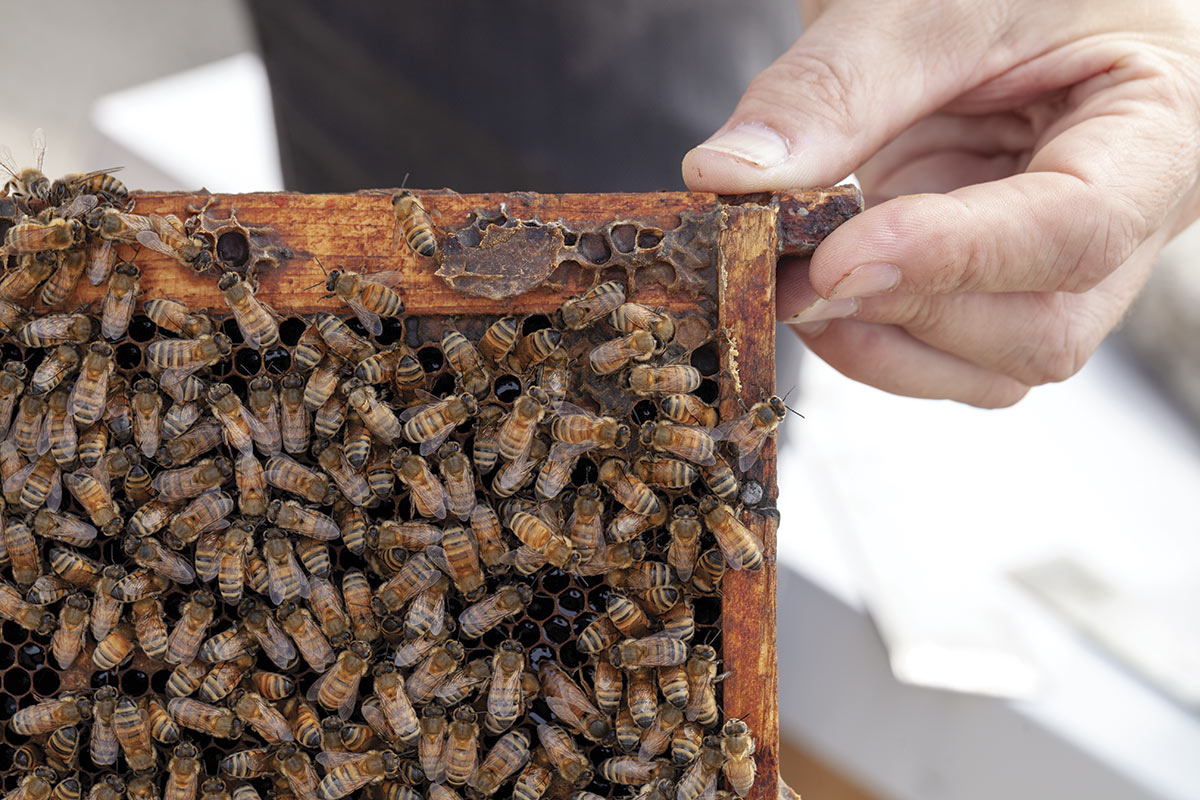
Plan Bee
A glimpse into the intricate lives of the tiny but mighty pollinators with New College beekeeper Tom Nolan
The answer came as a surprise, especially from the mouth of Tom Nolan, New College’s newly designated beekeeper and a man I had just watched handle the hives and their thousands of buzzing denizens on the roof of 45 Willcocks Street with the care and respect we usually reserve for our most cherished.
He was, of course, just making a point: While he concerns himself passionately with the health and well-being of his pollinator charges, and of honeybees in general, Nolan feels that the much-reported colony collapse and mass death of these insects point to a broader problem. Bees have survived and evolved for millions of years. They have, with adaptation, made it through an ice age—and they will adapt again. So, it’s not the bees that are in trouble. The planet is in trouble. We are in trouble.
Before we delve any deeper, a caveat: There are about 20,000 species of bees, of which Apis mellifera, the European honeybee, is only one. While almost all bees pollinate, only about half a dozen species produce honey, and many do not follow the complex social organization and behaviours we associate with honeybees: about half of all species are wild and solitary. Bees come in many colours and sizes, but no males of any species can sting. While the equally social bumblebees are native to North America, extant species of honeybee are not; European settlers first introduced them to the continent as agricultural aids. Fossil findings show, however, that at least one now extinct species of honeybee existed in North America 14 million years ago.
But back to beekeeper Nolan and our New College honeybees.
![Beekeeper [Tom Nolan] holding a bee smoker directly to one of his hives.](http://renew.newcollege.utoronto.ca/wp-content/uploads/2019/04/NEW-Plan-Bee-6886-1200px-200x300.jpg)
On the roof of 45 Willcocks with Tom Nolan. Even though our honeybees are known for their non-aggressive behaviour, Nolan demonstrates the use of a smoker before inspecting a frame in one of the hives.
What’s at Stake
Nolan, an organic beekeeper and founder of the Urban Toronto Beekeepers’ Association, absolutely believes that healthy bees mean a healthy planet. The pollinators’ struggles showcase stressors on the environment that affect humans as well, directly and indirectly. While he sometimes tires of the common assertion that “one in three bites of food comes from pollination,” he does not disagree. We could probably survive without the fruits, vegetables and grasses pollinated by bees and other insects, but it would certainly make our diets less balanced and flavourful.
To him, the big concern is current agricultural practices. Harmful pesticides make for one side of the equation. Yet the uncontrolled use of these chemicals goes hand in hand with the spread of large-scale commercial monoculture, and monoculture means the loss of forage, creating a double blow for bees and other pollinators. In that context, pests like the parasitic mite Varroa destructor and diseases such as American foulbrood, which usually attack already weakened organisms, flourish. So dying bees should serve as a warning—what is killing them also has an impact on our health and our food supply. It can also kill us.
Beguiling Bees
Honeybees fascinate because of the intricacy of their social structures and the immense power their tiny bodies wield in our ecosystems. The changing needs of the colony—depending on the time of year, the health of the organism and the status of a resident queen, for example—rule everything.
Through the size of the cells they construct for the queen’s eggs, worker bees decide the female-male ratio in the colony at any given time: the queen will know to drop an unfertilized egg into a larger cell (which she measures with her front legs) to produce a (male) drone, and a fertilized egg into a smaller cell for a (female) worker bee. Even an aging, less fertile queen will not be killed off until a newly raised virgin queen (who will have ensured that no competitors could hatch) has returned from a successful mating session. When food and resources get low, drones, who serve the sole purpose of reproduction, are dragged from the hive and blocked from re-entry. Honeybees often divide their tasks by age and experience, with more mature worker bees foraging for nectar and pollen and then passing it through their mouths to younger bees to process and store in the hive. A thriving colony will “run” its queen, slimming her down so she can fly, in preparation for swarming, which splits the colony and ensures survival and health. Not, of course, until it has raised a new queen for the remaining half of the colony.
The list of marvels goes on. Research has taught us that honeybees have excellent eyesight, can smell a predator, communicate the location of food through complex waggle dances, build their habitat from substances they excrete and can detect agitation in humans. A calm beekeeper might stroke their minute hairy bodies without incident.
The colour black also may not irritate bees as much as popular myth would have us believe. The idea emerged, among other things, from trials in which black cotton balls trailed through the air on a stick consistently contained more bee stingers than did white cotton balls. Commentators further hypothesized that people dressed in black clothing reminded the bees of bears attacking their hives. In fact, black objects aggressively waved against a backdrop of blue sky likely just stand out more than white ones. It’s a matter of contrast, Nolan says. “To say a bee cannot tell the difference between a bear and someone wearing black to me is an insult to the bee,” he adds with a smile.
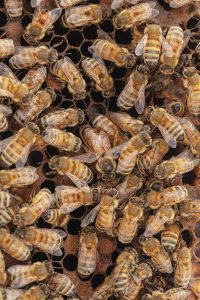
Life in the hive. Crowded by worker bees, we find the queen bee with her distinctive colouring and size.
On the Roof at New College
The bees living on the roof of 45 Willcocks Street—currently three colonies of about 40,000 specimens each—arrived in the dead of night one Tuesday in July 2018, transported as nucleus colonies from Port Hope. Like most honeybees raised in Canada, they were bred not according to genetic lines but by trait. The two traits beekeepers most value in Ontario are hygiene (passed down through the queen’s genes) and gentleness (passed down through the drones). So-called hygienic colonies diligently root out signs of disease in their combs, while gentle ones, as the name suggests, show little aggression around humans.
Once they have survived the winter, NEW’s colonies, Nolan hopes, will grow, help pollinate surrounding gardens and produce some honey that might come into play in New College’s Global Food Equity programming and show up on the menu in the college cafeteria. Above all, however, he plans to use the roof-top apiary as an educational space, teaching students, faculty, staff, and community members about the wondrous lives of honeybees, the insects’ place in our urban food and ecosystems and the secrets of beekeeping. And what does he suggest people do to help bees? “Plant pollinator gardens and, if you can, support local farmers.” We’re looking forward to spring already!
Did you know?
- A worker bee takes about 10 trips a day to find nectar.
- A single bee can visit between 50 and 1,000 flowers per day.
- It takes visits to 2 million flowers to produce 1 pound of honey.
- An average worker bee makes only about 0.6 g (that is one-twelfth of a teaspoon) of honey in its lifetime.
- One honeybee colony can produce 60 to 100 pounds of honey per year.
- A queen can live between 3 and 5 years, mating only once in her lifetime (with multiple drones) and laying about 1,500 to 2,000 eggs a day.
- In summer, worker bees live for 1 to 2 months; in winter, with less work, they can survive for almost 6 months.
- Drones die after mating.
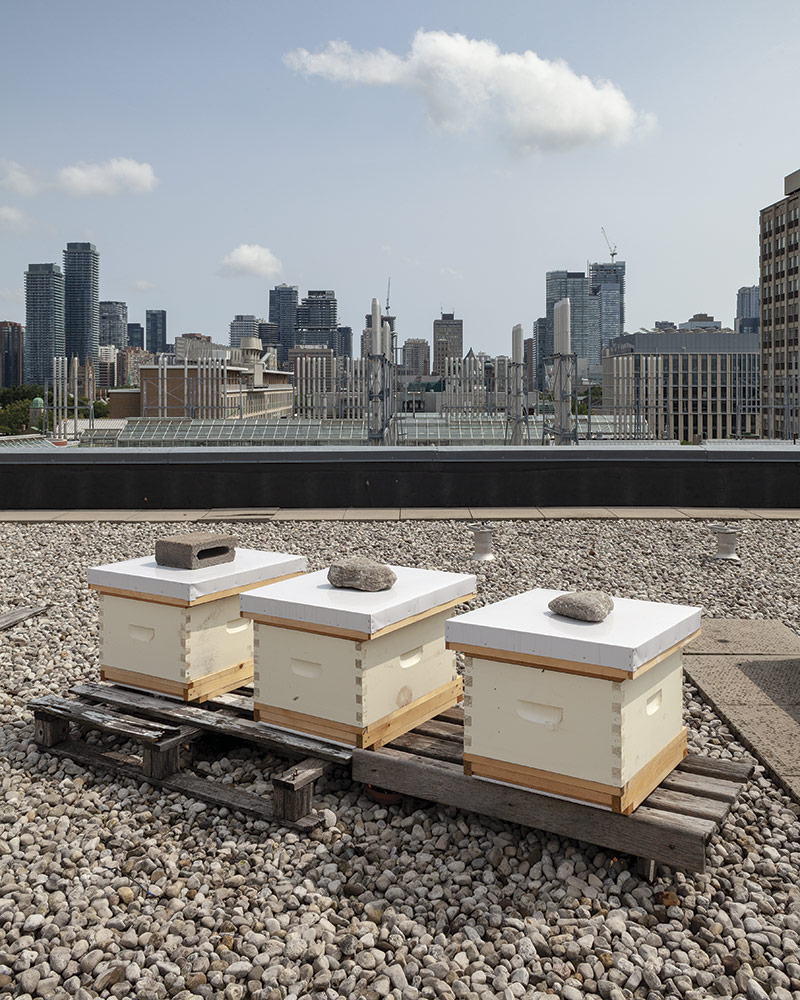
Photos: Michael Barker

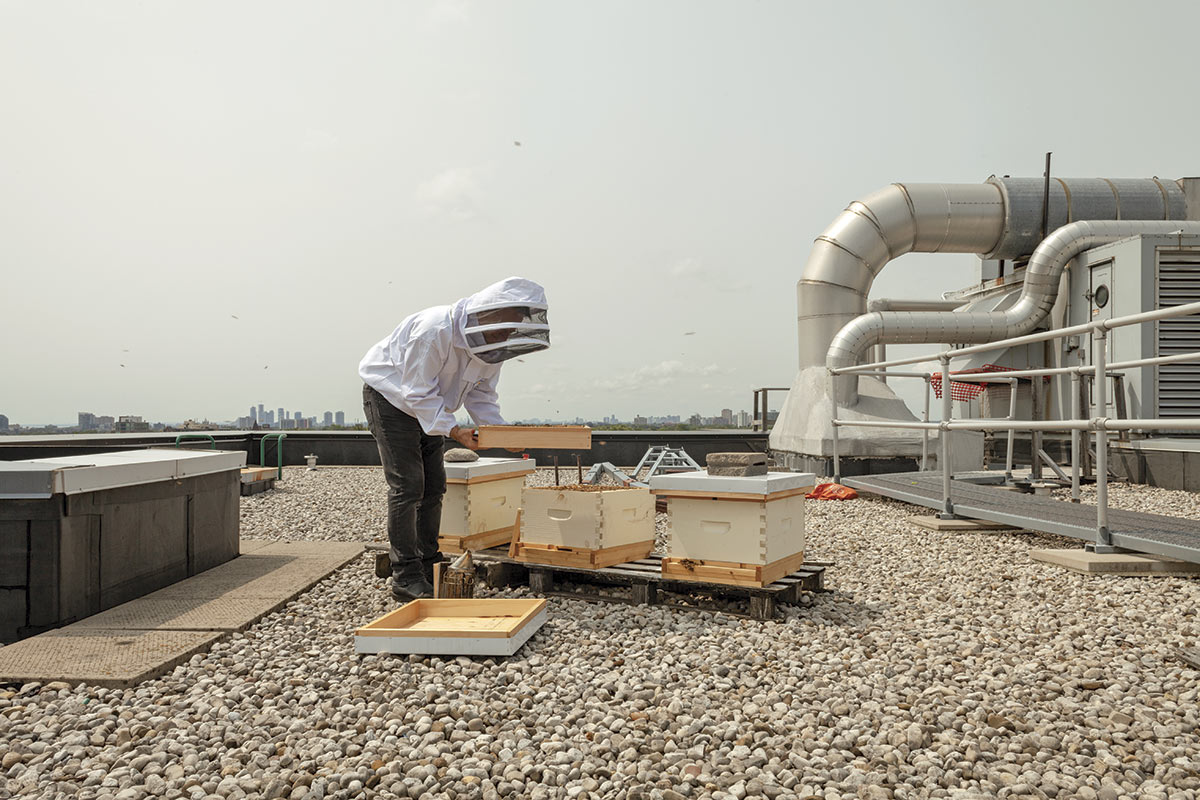
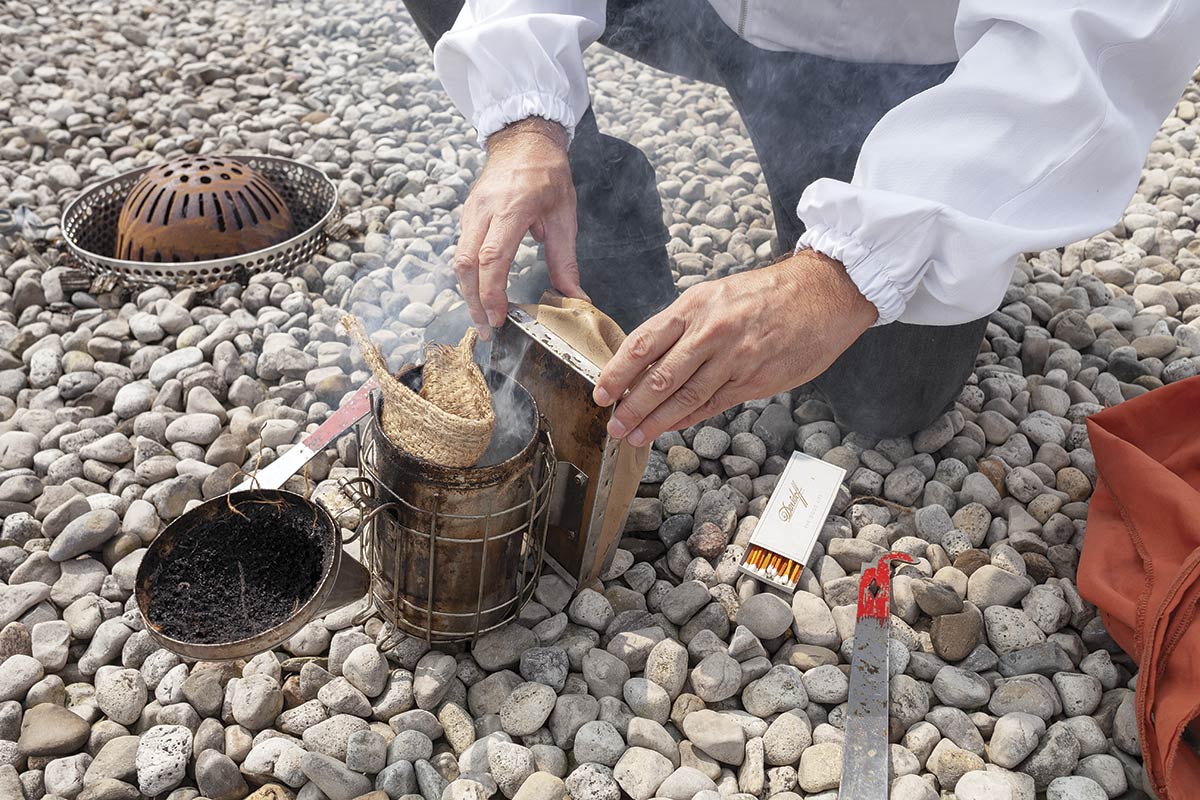
![Beekeeper [Tom Nolan] on a roof working with a hive, with the Toronto skyline behind him.](http://renew.newcollege.utoronto.ca/wp-content/uploads/2019/04/NEW-Plan-Bee-7180-1200px.jpg)
![Portrait of man in an open beekeeper’s suit and t-shirt with a cartoon bee on it [Tom Nolan].](http://renew.newcollege.utoronto.ca/wp-content/uploads/2019/04/NEW-Plan-Bee-6900-1200px.jpg)
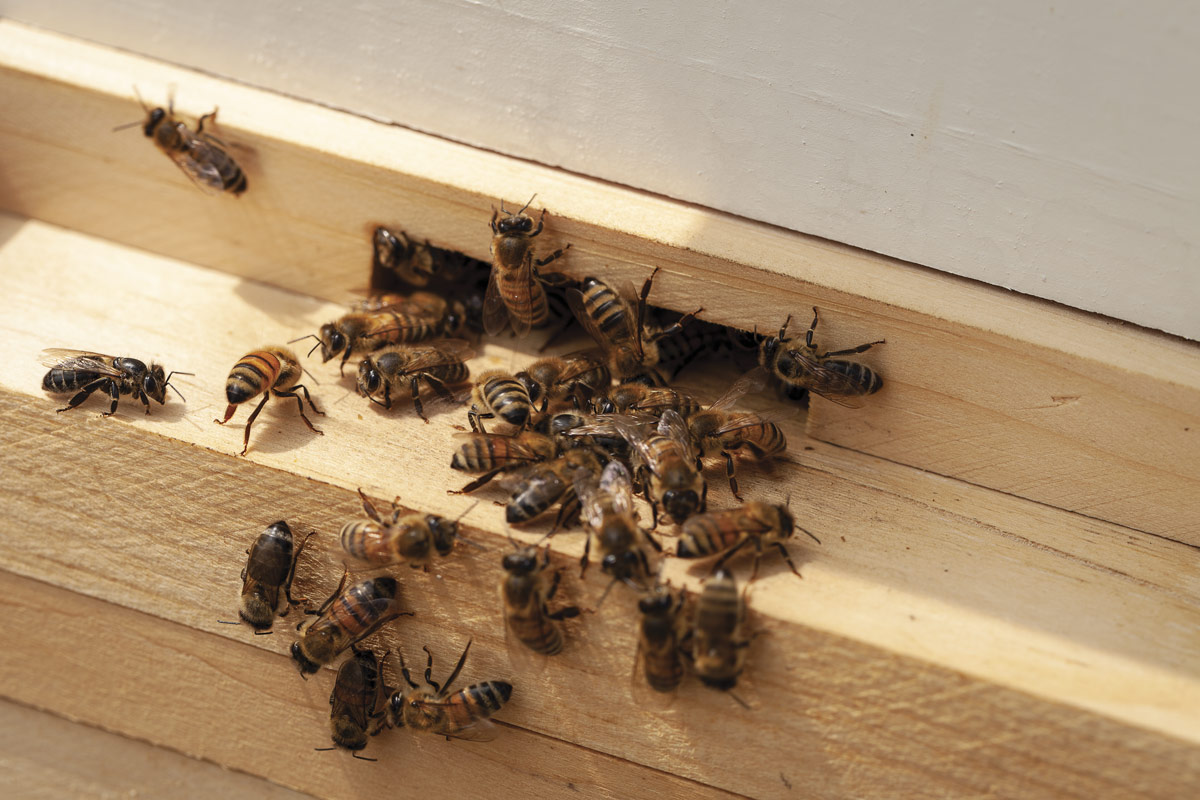

![Close-up of beekeeper [Tom Nolan] holding a sliding frame honeycomb up to his face.](http://renew.newcollege.utoronto.ca/wp-content/uploads/2019/04/NEW-Plan-Bee-7202-1200px.jpg)
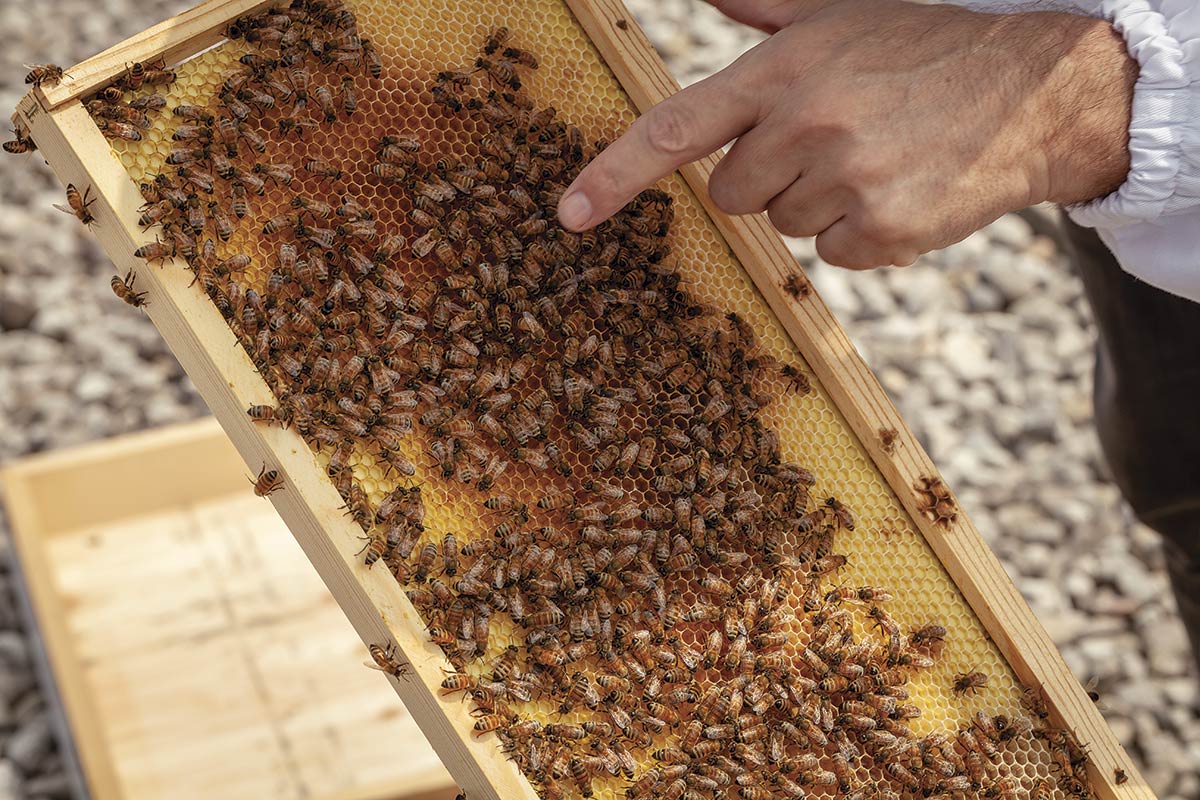
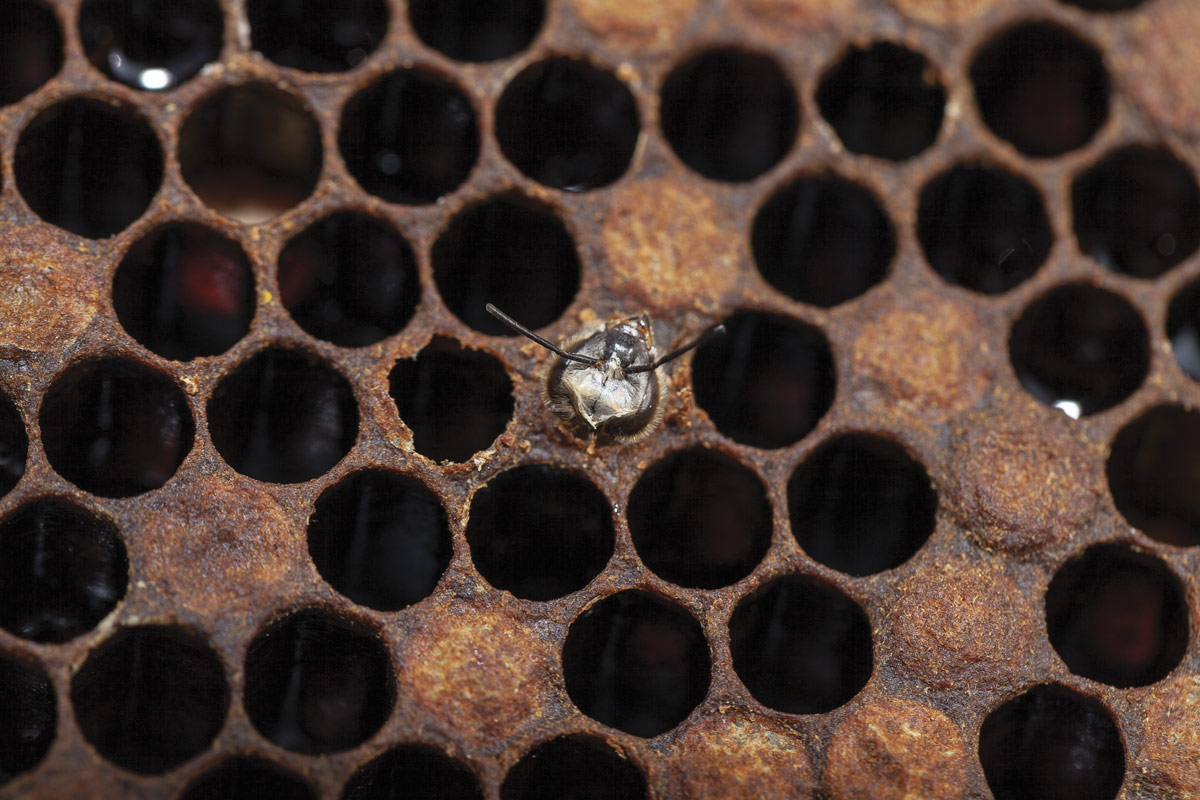
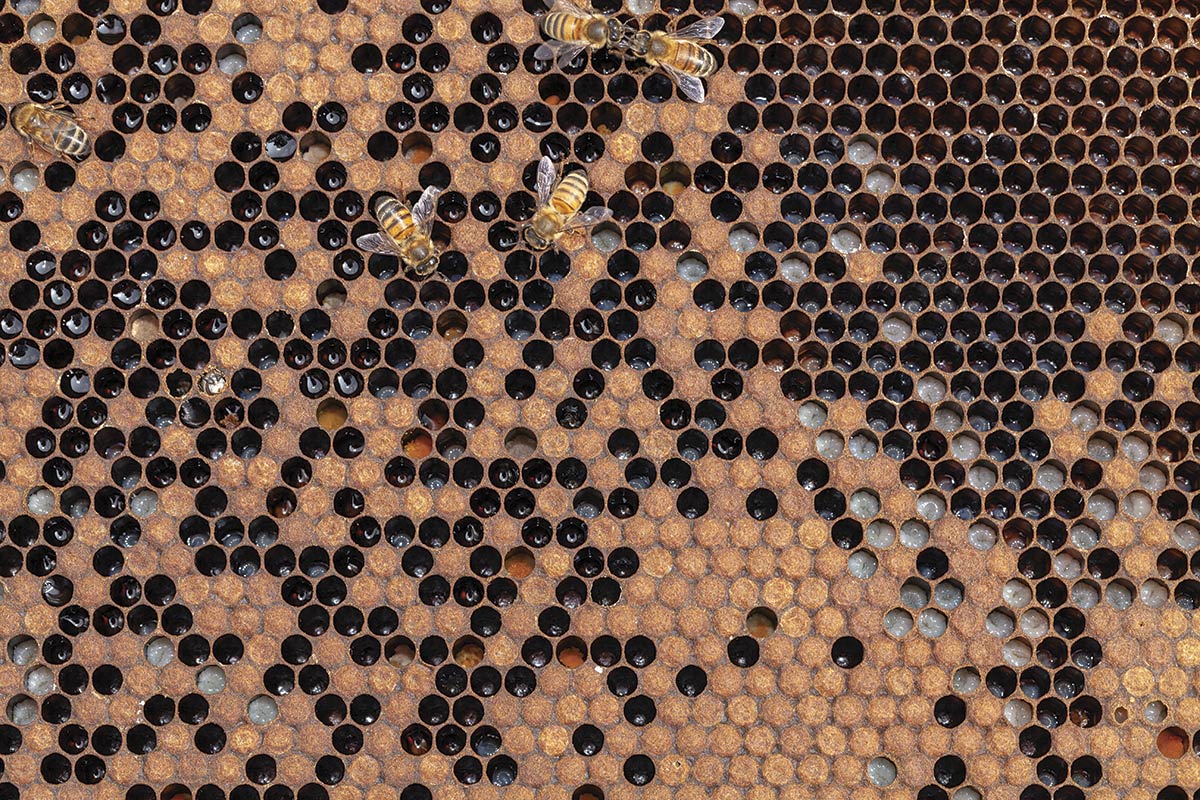
![Portrait of man in an open beekeeper’s suit and t-shirt with a cartoon bee on it [Tom Nolan].](http://renew.newcollege.utoronto.ca/wp-content/uploads/2019/04/NEW-Plan-Bee-6853-800px-200x300.jpg)
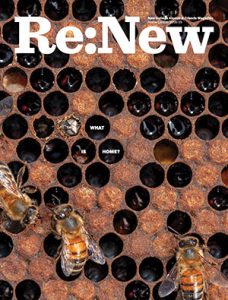
![Portrait of a seated, smiling woman with box braids and folded hands [Lydia Gill in U of T’s Convocation Hall]; rows of seats visible behind her.](http://renew.newcollege.utoronto.ca/wp-content/uploads/2019/04/Lydia-Gill-900px-150x150.jpg)

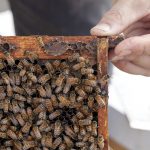
![Portrait of a woman with long, dark hair and glasses, smiling at the camera [Anne McGuire].](http://renew.newcollege.utoronto.ca/wp-content/uploads/2019/04/AnneMcGuire-900px-landscape-150x150.jpg)

